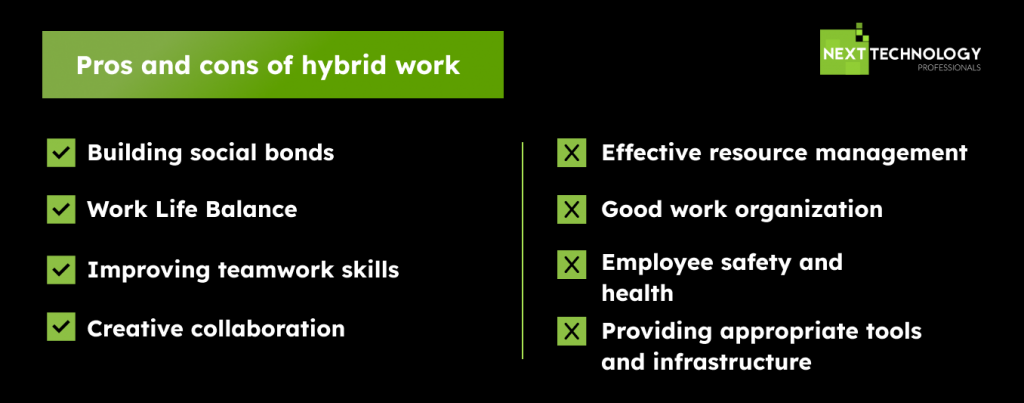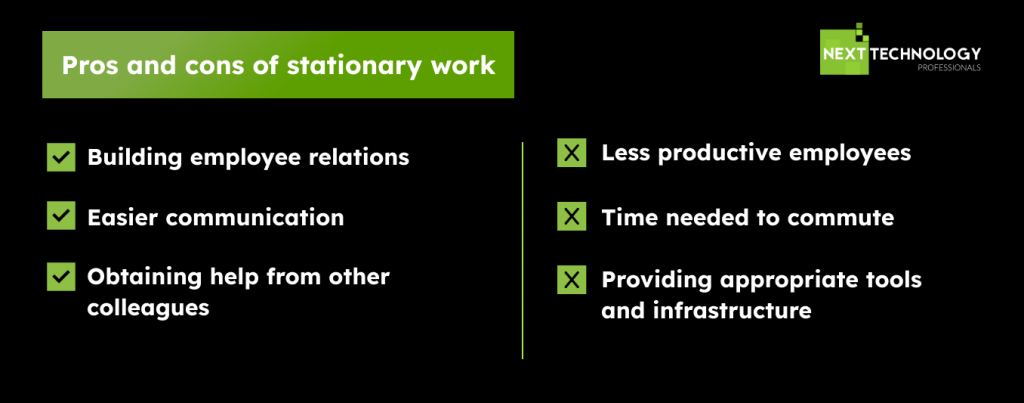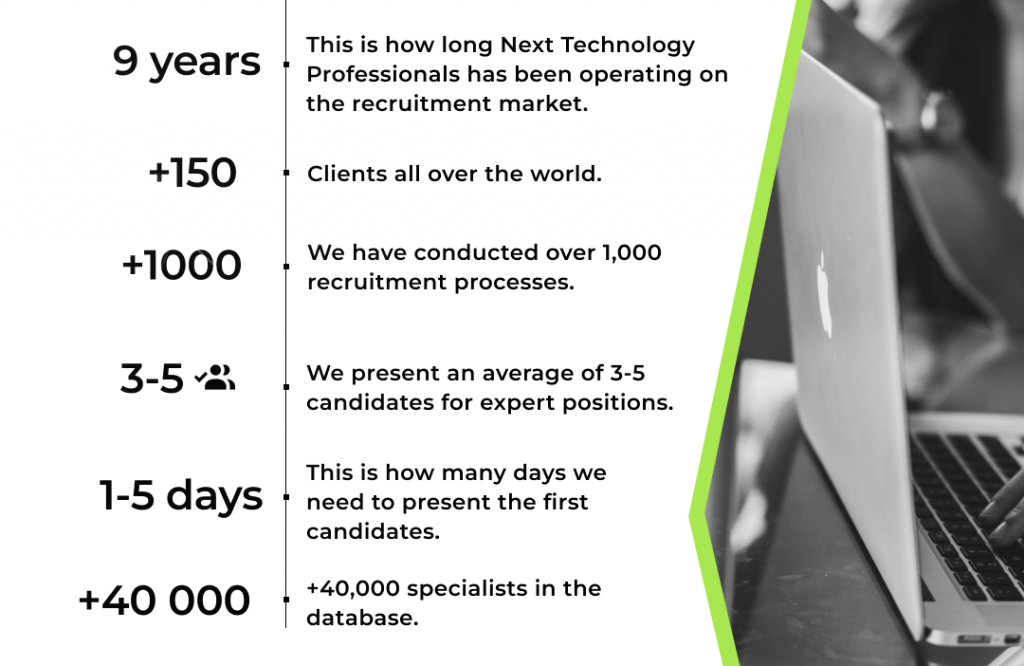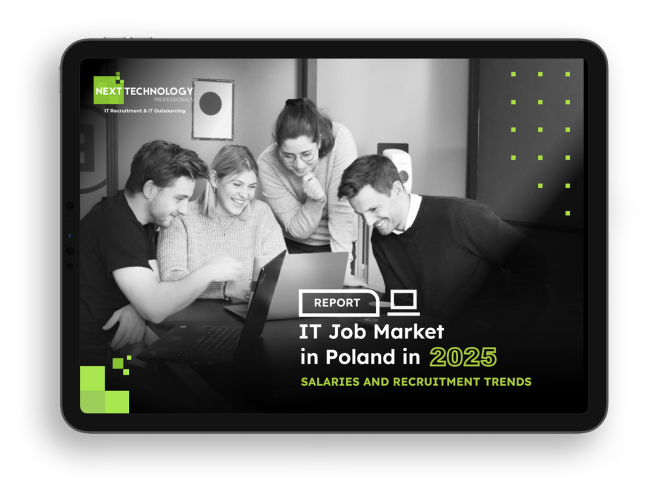Over the last few years, and especially as a result of the COVID-19 pandemic, the way how work is performed has changed significantly. The previous on-site work mode has been mostly replaced by a remote work model or, to a lesser extent, a hybrid model. Over time, companies began to notice the positive impact of remote work on employee efficiency, and despite the situation related to the mass lockdown slowly calming down, employees did not show any willingness to return to offices, and employers themselves did not see the need to change the model. However, voices of opposition can be heard more and more often, saying that remote work generates many negative effects and the best solution now will be a complete return of employees to offices. Therefore, in this article we will look at different modes of work and discuss their impact on employees and the strengths and weaknesses associated with each of them.

Work models in IT
Let’s take a look at each model to find out its pros and cons.
Remote work in IT
Our report on the IT labor market shows that 58% of job offers included the possibility of working completely remotely – that’s as much as 3 p. p. less than last year.

Remote work, especially in the IT industry, has become particularly popular and desirable. Our report on the IT labor market shows that remote work is the most preferred benefit. The group most often using the remote work model includes freelancers, IT specialists and people who value flexibility and freedom while performing their professional duties. Developers often worked remotely before the pandemic, and now they have been joined by other specialists, such as data analysts, UI/UX experts and IT administrators.
Working remotely has many advantages, such as not having to travel to the office. Unfortunately, it also has its drawbacks. We have devoted a separate article to the advantages and disadvantages of remote work, so we encourage you to read it!
Hybrid work in IT
Hybrid work, that is a combination of remote and office work, is becoming an increasingly popular work option. It gives employees greater flexibility and the ability to adapt work to their own preferences and compromise work-life balance.
Working in a hybrid mode has the advantages of enabling live meetings with other team members, building social bonds and creative cooperation. This gives employees the opportunity to establish social contacts and improve their teamwork skills. Specific working hours in the office help maintain an appropriate daily rhythm and help maintain a healthy work-life balance.
However, hybrid work also brings some challenges. It requires effective resource management and effective organization of employee work, while ensuring a safe work area. It is also necessary to provide appropriate tools and infrastructure to enable IT specialists to work effectively both remotely and in the office.

Stationary work in IT
Our conversations with IT specialists who prefer to work from the office show that in this context they value building relationships in the team and easier communication. However, when we asked about productivity, it turned out that it is slightly worse than when working remotely. Another advantage is that in case of problems or difficulties, the constant presence of team members in the office can make it easier to obtain help and support. However, coworkers also respond equally quickly online, so it’s not that big of a deal.

What type of work do IT specialists prefer?
IT specialists, like many other professionals, prefer a way of working that offers flexibility and promotes work-life balance. So the best solution is to simply give the programmer the opportunity to choose. Developers’ opinions on operating mode preferences are still divided. As many as 78% of respondents mentioned this model as the most important benefit. In turn, 55% of specialists prefer completely remote work, while 42% chose hybrid work as the optimal model (with an advantage of 4 days of remote work). Only 3% of respondents support 100% work from offices.
It is worth considering that the mandatory hybrid or stationary work mode may force some IT specialists to change their place of residence or go on long trips. In terms of hybrid work, it is best to offer employees who live far away to commute once a quarter – this will allow for integration and at the same time will not burden the employee with organizing the commute.
However, it should be remembered that each model requires the use of specific logistics and technological solutions to facilitate cooperation, effective supervision and organization of employee duties to ensure its success.

Employers want employees to fully return to offices
At the turn of last year, many companies declared that they would like to completely change the work model from remote, hybrid to a stationary work model. You can find more about this phenomenon in our article about the advantages and disadvantages of remote work.
Adjusting the work mode to the employee’s capabilities is the best solution
Remote, hybrid, and stationary work have different benefits and challenges for IT workers. Remote work gives you flexibility and the ability to work from anywhere in the world, but it can negatively impact social contact and mental health. We would like to point out, however, that it does not have to be this way and many people do well in this mode. Hybrid work is a compromise that gives employees flexibility – however, we must adjust the number of days of hybrid work to the employee’s situation. Returning to the office requires providing the right tools and infrastructure.
Appropriate selection of employees – Next Technology Professionals
Each work mode has its advantages and challenges, and the choice depends on employee preferences and company strategy. All these work modes are aimed at ensuring the efficiency and well-being of IT employees.

As an IT recruitment agency and IT outsourcing company, we will help you select the perfect employees for a given job position. We offer a number of the best solutions and professional recruitment staff.
Contact us for a free consultation or write a message to contact@nexttechnology.io. We are sure that we can work out beneficial solutions together and will be happy to present the terms and conditions of our service to you.





